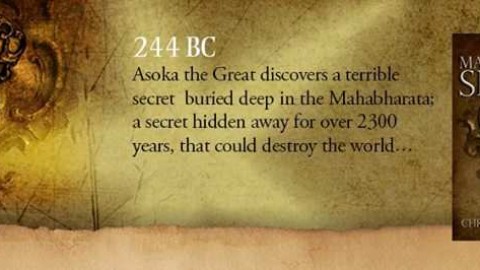
What is it like to be a child staying in Iran in the 1980s during the Islamic Revolution? ‘Persepolis’ is a tell all as Marjane Satrapi, a precocious ten year old then, goes ahead to write about the war between Iran and Iraq and how it affected her and the lives of her near and dear ones.
The intelligent and outspoken child of radical Marxists, Satrapi is also the great-granddaughter of Iran’s last emperor. Satrapi’s childhood is entwined with the history of her country. The story starts with a ten year old Satrapi sulking because wearing a veil in school is made obligatory during the Islamic revolution. Bilingual schools were banned. She struggles with the veil as she comes from a modern and liberal family. At a very young age, Satrapi is taught to question injustices in the world. She aspires to become a prophet to rid the world from the cruelties of unnecessary rules and regulations. Marji observes the oppression by the Shah about revolutions and socialism. She even says that God looks like Karl Marx. She expresses her wish to go for protest rallies along with her parents but is barred from doing so.
Marji is highly inspired by her Uncle Anoosh, who returns from Moscow after being imprisoned for nine long years for being a Communist revolutionary. He tells her tales about her own family, about how her grandfather was loyal to Shah but his uncle Fereydoon was attracted to justice and democracy. He also goes on to tell the satrapies that more than half of the people in Iran are illiterate. The exit of the Shah and the abolition of the monarchy paved the way for Ayatollah Khomeini and the Islamic Republic in 1979. Marji’s world is altered forever by the creation of the republic, as many friends and family leave Iran for the United States and Europe. Her uncle Anoosh encourages everyone by telling them that it is just a period of transition and that everything will work out. However, they soon discover that their communist-revolutionary friends who had just been released from prison are either dead or fled, and Anoosh is arrested and executed as a Russian spy. This leaves Marji in tears. She rejects her faith, lost and without bearing in the universe, unable to think of anything worse – bombs fell on Iran.
The war brought strife to Marji’s neighborhood as fearful people quickly bought out store shelves in order to over-stock their homes to provide for their families in case of diminished supply. Marji’s mother once again shows her duplicity by scolding bickering neighbors over hoarding instead of taking what they need so there is enough for everyone. The roads become overburdened with cars and a limited amount of fuel is available due to the Iraqi bombing of an oil refinery in Abadan and many other border towns.
The book goes on to tell about all of the hardships faced by the people of Iran and this is only the first part of the book! The second part of the book tells us more about Satrapi’s high school days, the time when she loses her innocence, smokes her first cigarette et al. But did I mention that Persepolis is actually a graphic novel? Not only is the story amazing, but so is the comic strip! Satrapi is fierce and stubborn. She is likeable, and annoying, but the feature of hers that shines through, is her constant need to learn something new. You feel the pain of losing someone when she does. Satrapi weaves a wonderful tale of her childhood to her adulthood.
Persepolis is the kind of book that can be read by all but can’t be digested by many.
My Verdict
4
It’s a must read as it gives a perfect view into the lives of the Iranians during the revolution and the pure beauty by which Satrapi has narrated the entire story is just fabulous.








